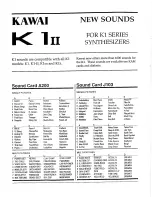
4. HARDWARE OVERVIEW
4.1. Main features
The MiniBrute 2S takes a multi-layered step sequencer, an arpeggiator, a powerful analog
monosynth, and a flexible patch bay, and combines them into a powerful music creation
station. As its initial interface it provides a set of drum-machine-style pads, arranged in a
piano-style layout and spanning a single octave. Besides offering a way to play notes, the
pads provide additional ways to express your musical ideas:
•
Pressure
generates a signal that corresponds to how hard you press a pad after
it has been played. You can use this signal to modulate vibrato, filter cutoff, and
other parameters.
•
Velocity
corresponds to the dynamics of your playing, and similar to aftertouch,
can modulate multiple parameters.
•
Transposition
allows shifting the note range of the pads over six octaves.
• An
arpeggiator
automates the creation of repeating sequences of notes.
• The
sequencer
allows you to trigger musical passages you have created, such
as melodies, bass lines, or percussive riffs.
Alternative ways of playing the synthesizer are available through USB/MIDI control and
external CV/GATE signals.
4.2. The Shift button
The Shift button is circled in blue to draw attention to the blue letters that are silkscreened in
various areas of the Sequencer section. For example, look under the Tempo knob, under the
buttons, and inside the pads: you'll see blue words and numbers.
When the Shift button is held and the corresponding button or pad is pressed, secondary
functions are activated or toggled. For example, the Step Size of a pattern can be changed
to 1/16th notes by holding the Shift button and pressing the F# pad.
For a complete description of the secondary Shift features, see the
chapter.
♪
: The Shift button is not related to the blue letters silkscreened under the synthesizer knobs or inside
the patch bay.
22
Arturia - User Manual MiniBrute 2S - Hardware overview
Summary of Contents for MINIBRUTE 2S
Page 1: ...USER MANUAL...












































